T71A Versatile angle of view and shooting distance constraints
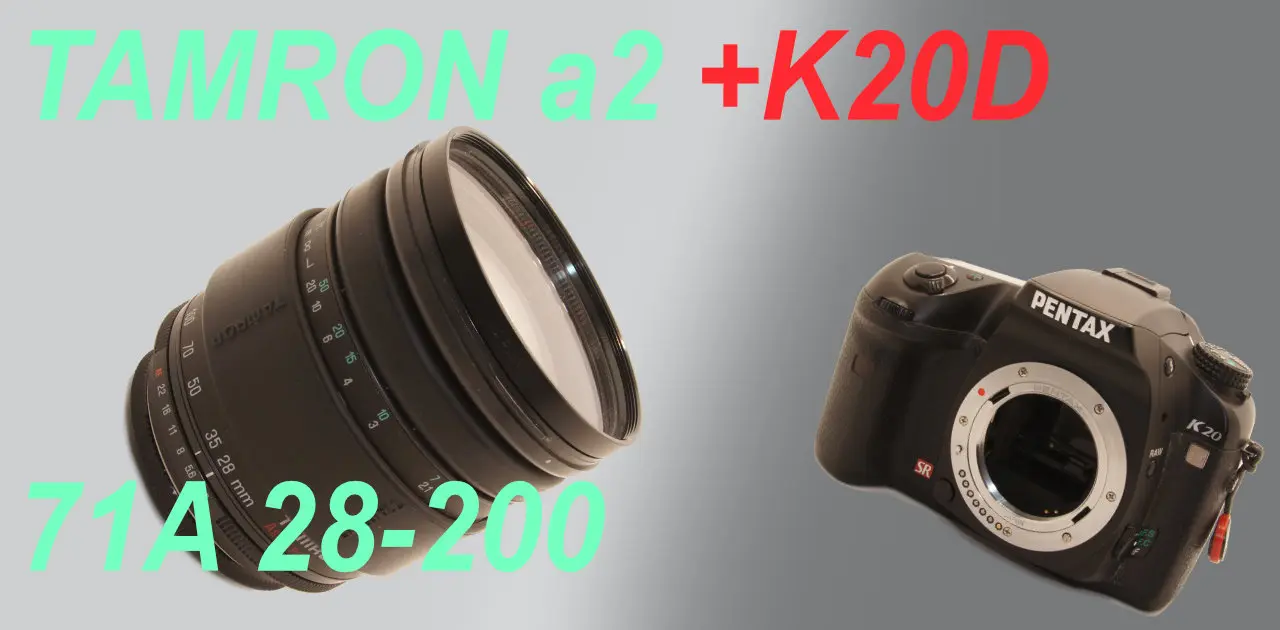
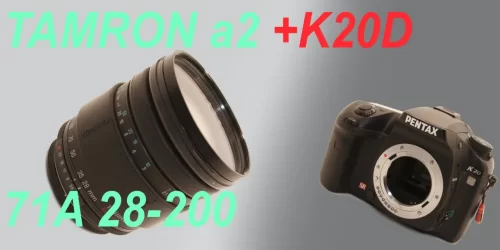
A review and sample photos taken using the Tamron 71A 28-200mm F/3.5-5.6 Aspherical with a PENTAX K20D.
- Please see the disclaimer regarding advertising here.
- Italicized links in the text are advertisement links that take you to other sites.
Table of contents
Gallery
- 写真作例の撮影はPENTAX K20D
Review
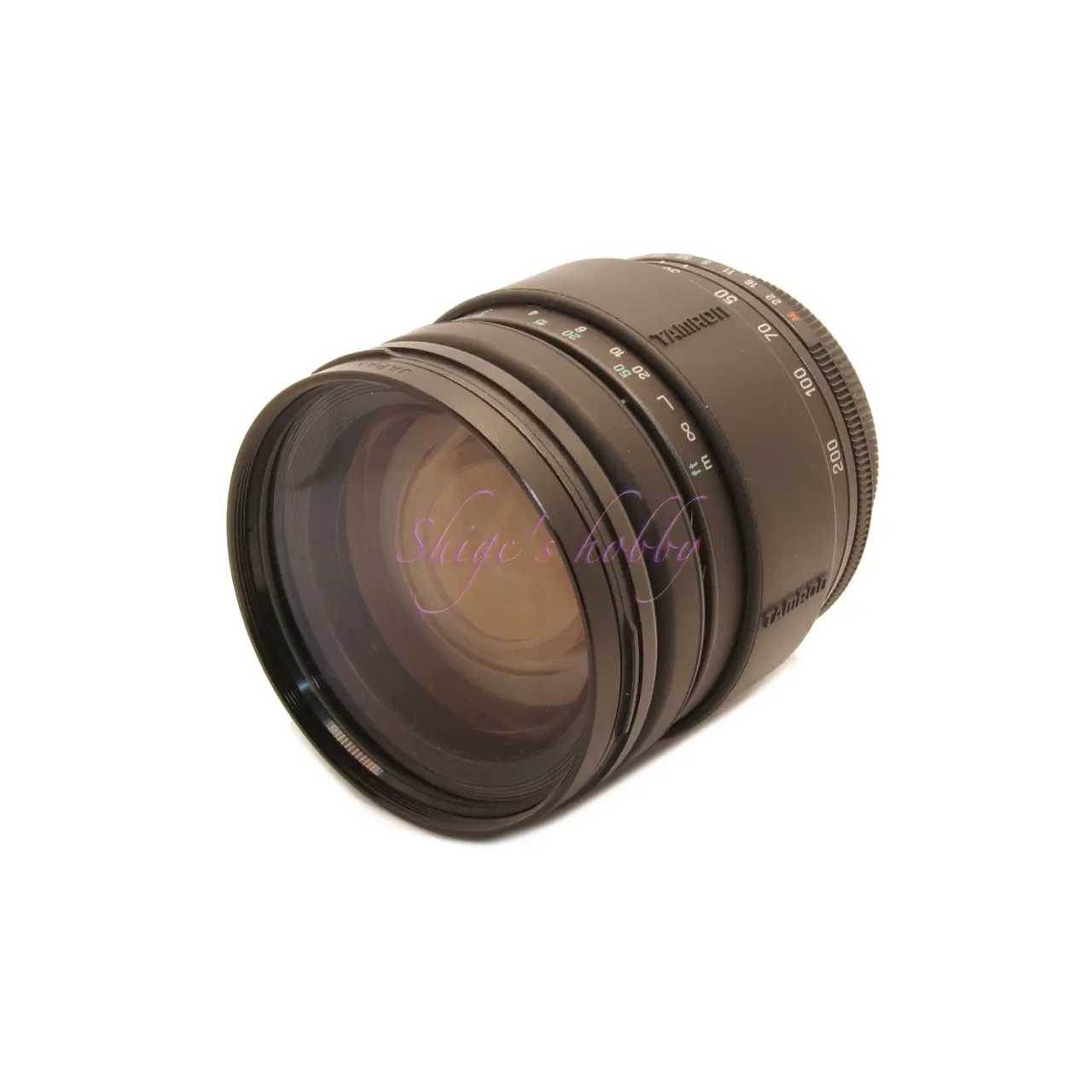
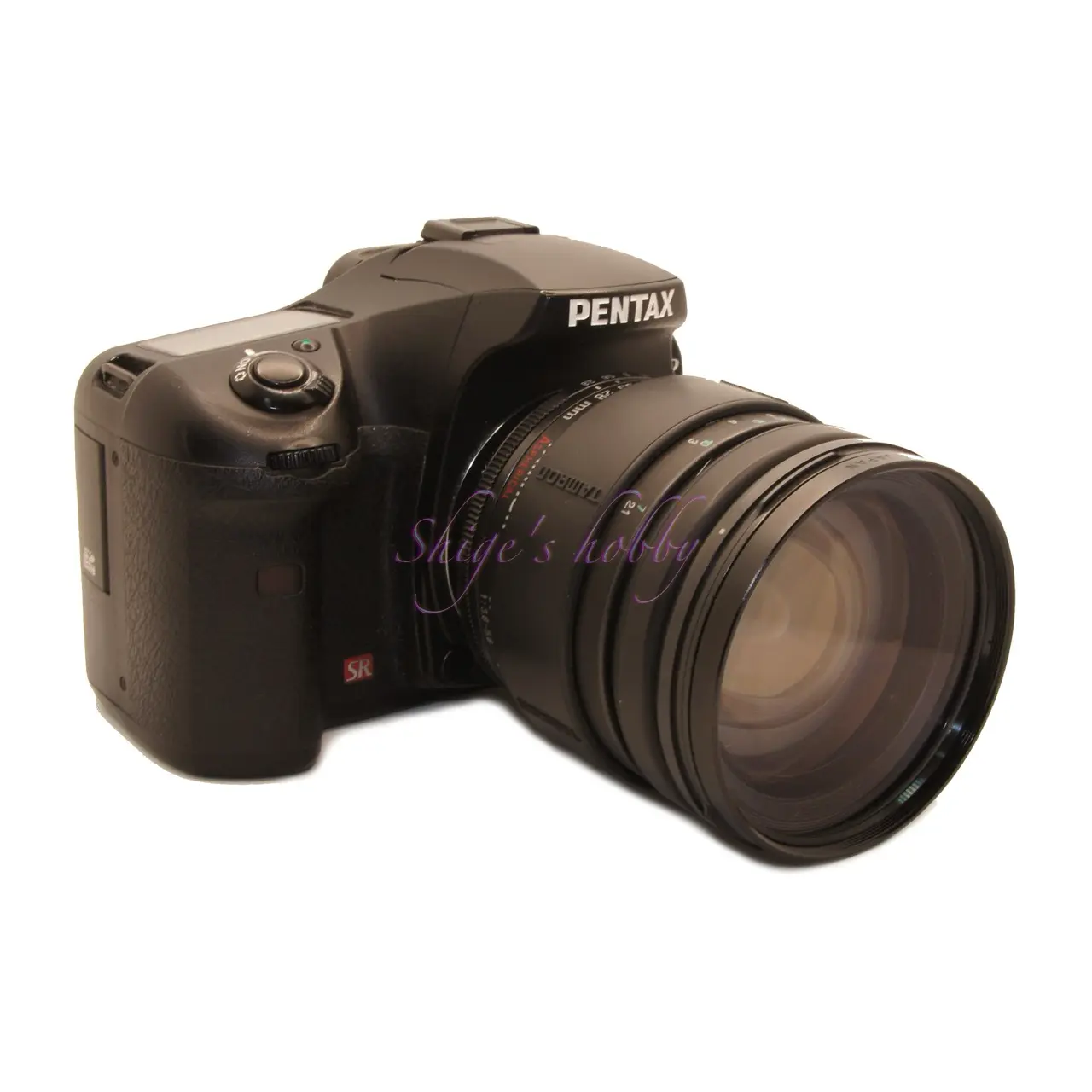
1.Overview
The Tamron 71A 28-200mm F/3.5-5.6 Aspherical is a high-magnification zoom lens that was released in 1994 and uses the Tamron Adaptall 2 mount.
The Tamron 71A is characterized by its wide focal length (angle of view) of 28mm to 200mm (75 degrees to 12 degrees in 35mm film angle of view equivalent). However, the minimum shooting distance is 2.1m, so it is not a lens that can get close, and this 71A lens can be said to have a “Versatile angle of view and shooting distance constraints.”
The detailed specifications of the lens are listed in the table, but the main specifications are summarized as follows.
- Focal length 28mm~200mm
- Aperture value F3.8-5.6
- Aperture blades 8
- Minimum shooting distance 2.1m
- Filter diameter 72mm
- Hood B5FH (plastic insert)
- Option to shorten the minimum shooting distance “CLOSE UP ADAPTER LENS for 28-200 /3.8-5.6(72φ)・A9FB”
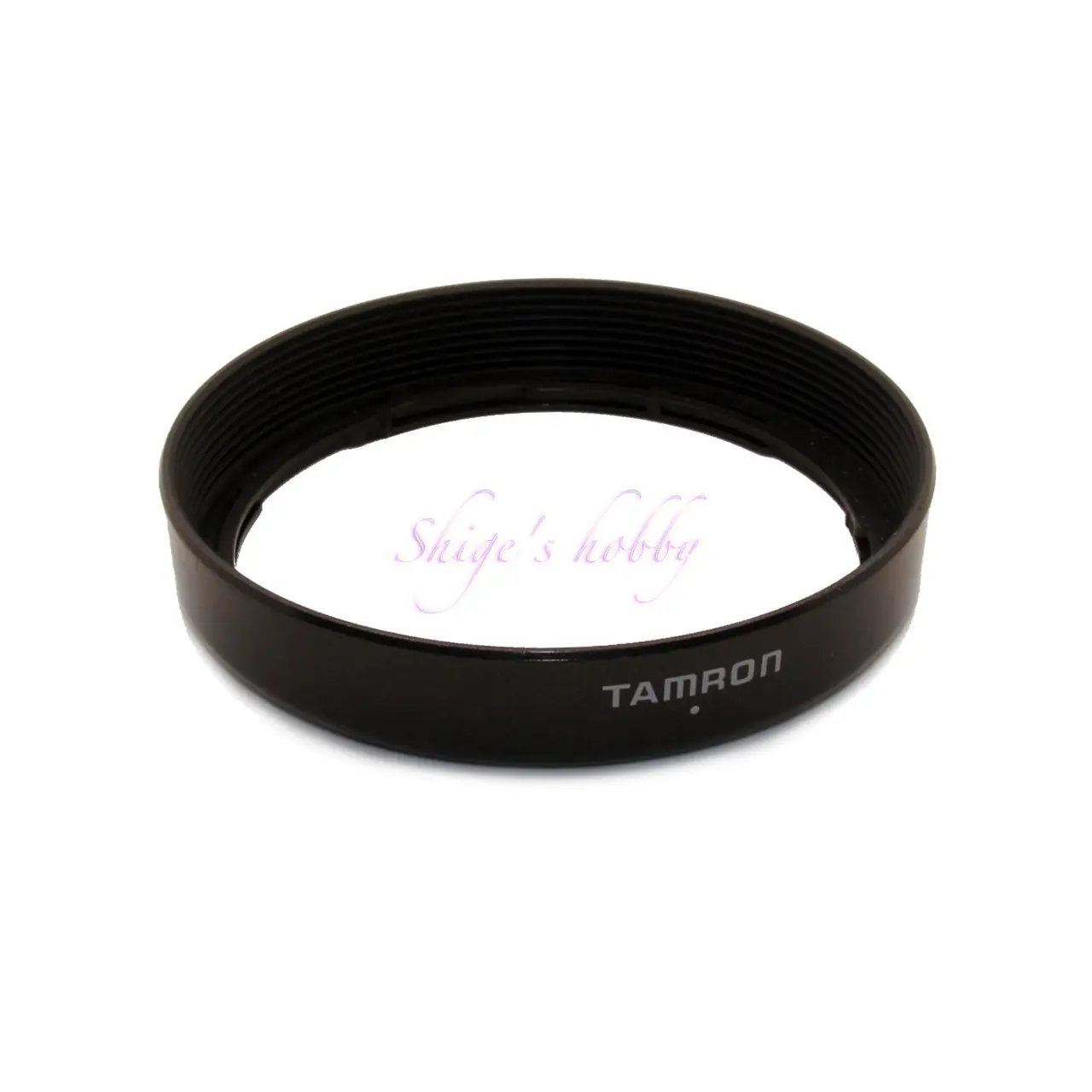
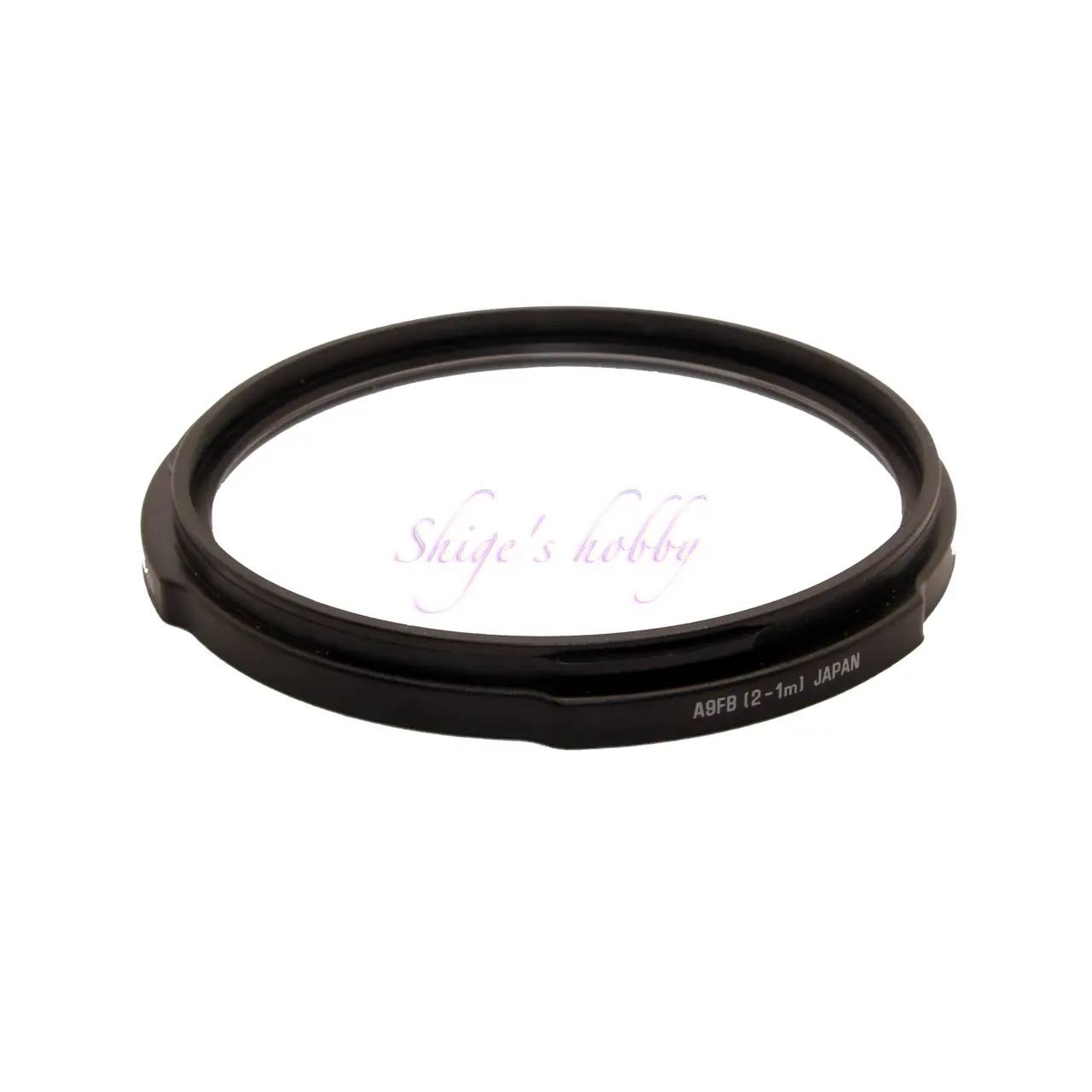
This lens uses Tamron’s proprietary Adaptall 2 mount, so by replacing the mount, it can be used with SLR lenses from various manufacturers. It can also be used with the latest mirrorless cameras via an Adaptall 2 adapter, of which there are many adapters for mirrorless cameras such as Nikon F and Canon EF mounts.
2.Usability
When shooting with a PENTAX APS-C sensor (sensor magnification x1.5), the Tamron 71A becomes a telephoto zoom lens with a 35mm equivalent of 42mm to 300mm (35mm film equivalent of 54 degrees to 8 degrees).
There is a PK-A mount adapter that allows the Adaptor 2 lens to be used with a PENTAX K, which allows aperture-priority AE (Auto Exposure). However, the adapter I own has manufacturing errors in the contacts, which makes exposure control unstable when used with a digital camera, so I use a PK-M mount adapter with actual aperture or an M42 mount adapter + PENTAX genuine K-M42 mount adapter (Mount Adapter K).
When shooting with actual aperture with a single-lens reflex camera, the viewfinder becomes darker when the aperture value is increased. In this respect, the electronic viewfinder (EVF) of a mirrorless camera is easy to use because the brightness is automatically corrected when the aperture value is increased.
When used with an APS-C size sensor, the wide-angle 28mm to 100mm lens does not have the sharp resolution of the latest lenses when the aperture is open, but it still produces a decent photo. At 200mm, chromatic aberration is noticeable, making it feel like an old lens.
It is not very resistant to backlight, and ghosts and flares are likely to occur.
A hood is a countermeasure against this, but it is rarely sold with the lens, but as of 2025, it can be purchased for around 500 to 1000 yen at Antiqualiy, a used camera shop that handles many hoods, or on auction sites. However, judging from its appearance, since it is a cylindrical hood, the total length of the hood is short to prevent vignetting at 28mm, and the light blocking performance at 200mm is questionable. The hood is cheap, so I am thinking of getting one someday.
This lens is unpopular on the used market because it is a manual focus lens, the lens barrel is made of rubber and plastic and looks cheap, and the minimum shooting distance, which will be described in detail next.
The price of this lens is 1000 yen for junk and 3000 yen for working ones. It is not particularly high performance, but the image quality is not so bad, so it is a lens that is worth having if you consider using it with multiple cameras with Adaptol 2 mount.
I bought it because it came with an adapter for the almost phantom MAMIYA ZE mount and was the price of the working one mentioned earlier. I don’t have any particular attachment to the MAMIYA ZE, but I buy it when I see a rare mount.
At that time, there were some Tamron lenses that did not care about the minimum shooting distance, and this lens was made with the standard standard of 10 times the telephoto end and focal length of 200mm. Therefore, 10 times 200mm = 2.1m, but because this is applied to the entire focal range, the minimum shooting distance is also 2.1m for the wide-angle end focal length of 28mm, which is far too far to talk about as the minimum shooting distance for a wide-angle lens.
The minimum shooting distance of 2.1m at the wide-angle end and 28mm focal length is only suitable for taking landscapes, and the telephoto end of 200mm is also a very ordinary value at 2.1m, so it is difficult to take close-up shots of subjects. If you are used to the zoom + macro of Sigma lenses, you will find this quite inconvenient.
Even with Leica’s R-mount zoom lenses, which are not familiar with zoom lenses, if the lens has a wide-angle end of 28mm, you can generally get as close as 0.5m. Tamron itself must have felt that 2.1m was not good, and has released a close-up lens that screws into the front, the “CLOSE UP ADAPTER LENS for 28-200 /3.8-5.6(72φ)・A9FB”.
The A9FB is a special-purpose product that fits into the front frame of the 71A lens and hooks onto it with a plastic tab, and has a simple bayonet structure, but as a product it is a close-up lens with only one general-purpose lens, and when attached, the focal length changes from 2m to 1m. Since infinity cannot be used, the simple bayonet structure makes it easy to remove, which is an advantage. Since the original lens does not have a high resolution, there is no noticeable deterioration in the image when this is attached.
When using the image stabilization function of a PENTAX digital SLR camera, this lens does not have the function to transmit the focal length to the camera, so you need to manually input the focal length for image stabilization. It is a hassle to re-enter the focal length every time you zoom, so I set it to the telephoto side of 120mm and use image stabilization between 50mm and 200mm. Since there is little problem without image stabilization on the wide-angle side, I turn off the image stabilization switch when using wide-angle.
3.Add Info.
The 71A has the same lens configuration as the 71D, which can be used with autofocus.
When this lens was released, autofocus SLR cameras were at their peak, and this lens also had an autofocus version called the 71D, which was compatible with Nikon, Canon, Minolta, and Pentax.
This is simply an autofocus version of the 71A, and there is no difference in usage.
The minimum shooting distance of this lens is 2.1m, which is completely unacceptable, so in 1998 the 171A was released, which reduced the minimum shooting distance to 0.8m. However, even at a focal length of 28mm, it is still 0.8m, so it is still impossible to get close at all. The 171A was the last lens for the Tamron Adaptall 2 mount.
Since the 2000s, lenses with a wider telephoto focal length range of 28mm to 300mm have been introduced for 35mm SLR cameras, and high-magnification zoom lenses with wide-angle ends starting at around 18mm have been released for APS-C SLR cameras with smaller sensor sizes. In all cases, the minimum shooting distance has been shortened, making them highly convenient lenses.
As we enter the era of mirrorless cameras in the 2010s, these high-magnification zoom lenses, which tend to be larger in size, have become less common, and prime lenses and compact zoom lenses have become more popular.
Specification
| Item | 71A | 171A |
| focal length(mm) | 28-200 | 28-200 |
| Maximum aperture | 3.8-5.6 | 3.8-5.6 |
| Minimum aperture | 22 | 22 |
| Lens configuration | 8 | 8 |
| Leaf blade | 16 elements in 14 groups | 16 elements in 14 groups |
| Minimum distance(m) | 2.1 | 0.8 |
| Lens length(mm) | 79(Nikon-F) | 75(Nikon-F) |
| Lens max diameter(mm) | 82 | 79 |
| Filter type | 72 | 72 |
| Weight(g) | B5FH | D5FH |
| Hood | 516(Nikon-F) | 508(Nikon-F) |
| Lens mount | Nikon F Canon EF Sony α Olympus OM Canon FD M42 Leica R etc. | Nikon F Canon EF Sony α Olympus OM Canon FD M42 Leica R etc. |
| Release date | 1994~1998 | 1998 |
| Production numbers | ¥49,000 | ¥55,000 |
Reference links
Update history
- 2025.2.8
Affiliate links
- Please see the disclaimer regarding advertising here.
- Italicized links in the text are advertisement links that take you to other sites.
- TAMRON・Ads by Amazon
- TAMRON Books・Ads by Amazon
- Tamron 28-200mm F/3.8-5.6 A spherical lens ・Ads by Amazon


Leave a Reply